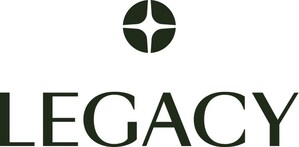Statement from Cheryl G. Healton, DrPH, President and CEO of Legacy
WASHINGTON, Jan. 11, 2013 /PRNewswire-USNewswire/ -- Today, the American Cancer Society (ACS) published guidelines in CA: A Cancer Journal for Clinicians that endorse screenings as a way to help patients and doctors navigate the potentially devastating diagnosis and treatment of lung cancer. In its guidelines, ACS recommended that clinicians discuss low-dose computed tomography (LDCT) screening with high-risk patients for lung cancer. The procedure has the potential to save many lives through early detection – similar to how mammograms save lives as a preventive measure for breast cancer. Additionally, the guidelines provide clinicians and patients with a detailed review of both the benefits and harms of screenings, and a discussion of how CT scans can be most effective and in what settings.
(Logo: http://photos.prnewswire.com/prnh/20101101/DC86294LOGO)
Lung cancer is the deadliest form of cancer for both men and women, accounting for 28 percent of all cancer deaths. In addition, the burden of disease from lung cancer is larger than any other cancer; 83 percent of lung cancer patients die within five years of diagnosis.
ACS is the nation's largest cancer resource center and network, with wide recognition, support and more than 100 years of advocacy and leadership on the issue of cancer. By issuing these guidelines and endorsing responsible use of LDCT scans, these guidelines can positively impact many Americans who are at risk for lung cancer. Both current and former smokers can benefit from having LDCT scans more widely incorporated into clinical practice and having the procedure reimbursed as a standard health benefit in the same manner as mammography screenings.
Legacy is a longtime supporter of lung cancer screening research and practice. We commend the thoughtful deliberation and action on this issue by ACS, as our hopes for this technology continue to become realized. Results from the National Lung Cancer Screening Trial of 2010 have demonstrated a statistically significant reduction in lung cancer mortalities through the use of LDCT scans. Over time the life-saving advantage of screening will increase because a higher proportion of patients with stage 1 and 2 treatable cancer will be identified. The new ACS guidelines recommend LDCT scans for patients aged 55-74, with no symptoms of lung cancer who have smoked the equivalent of one pack per day per year for 30 years ("30-pack years"), or who have quit within the past 15 years but have a 30-pack year history. While these guidelines are a good start to providing the medical community with direction, the potential for saving lives could be even greater if more trials continue to prove of the efficacy of LDCT scans. If screening becomes more routine, more people stand to benefit since many current and former heavy smokers are diagnosed with lung cancer at ages younger than 55.
Funding for LDCT scans should be covered under preventative services by health care providers and insurance companies in order to effectively save lives. A 2012 study published in Health Affairs found that LDCT scans also cost less for insurance companies than other cancer screenings. According to the report, the cost per life-year saved - a measurement of public health value – is under $19,000 for lung cancer screening. (In comparison, the cost per life year saved for mammography screening is $31,000 to $51,000 and for colorectal cancer screening is $19,000 to $29,000.) For benefits providers, the study found the cost of adding LDCT screening would be $0.76 per member per month.
Unfortunately for lung cancer sufferers and for those who love them, the disease remains highly stigmatized – public opinion indicates less sympathy for victims because lung cancer is so closely linked with cigarette smoking. We hope this action by ACS sparks more conversation about this serious public health issue and reiterates the tremendous need for more public awareness and education about LDCT screenings, about lung cancer, and broadly about tobacco use -- the number-one cause of preventable death in the United States.
Today's announcement represents positive change and a step forward in approaching lung cancer detection and tackling prevention of this disease. The guidelines bring hope that many more deaths can be prevented through early detection, with more Americans living longer, healthier lives.
Legacy helps people live longer, healthier lives by building a world where young people reject tobacco and anyone can quit. Legacy's proven-effective and nationally recognized public education programs include truth®, the national youth smoking prevention campaign that has been cited as contributing to significant declines in youth smoking; EX®, an innovative public health program designed to speak to smokers in their own language and change the way they approach quitting; and research initiatives exploring the causes, consequences and approaches to reducing tobacco use. Located in Washington, D.C., the foundation was created as a result of the November 1998 Master Settlement Agreement (MSA) reached between attorneys general from 46 states, five U.S. territories and the tobacco industry. To learn more about Legacy's life-saving programs, visit www.LegacyForHealth.org.
Follow us on Twitter @legacyforhealth and Facebook www.Facebook.com/Legacy.
SOURCE Legacy
WANT YOUR COMPANY'S NEWS FEATURED ON PRNEWSWIRE.COM?
Newsrooms &
Influencers
Digital Media
Outlets
Journalists
Opted In




Share this article